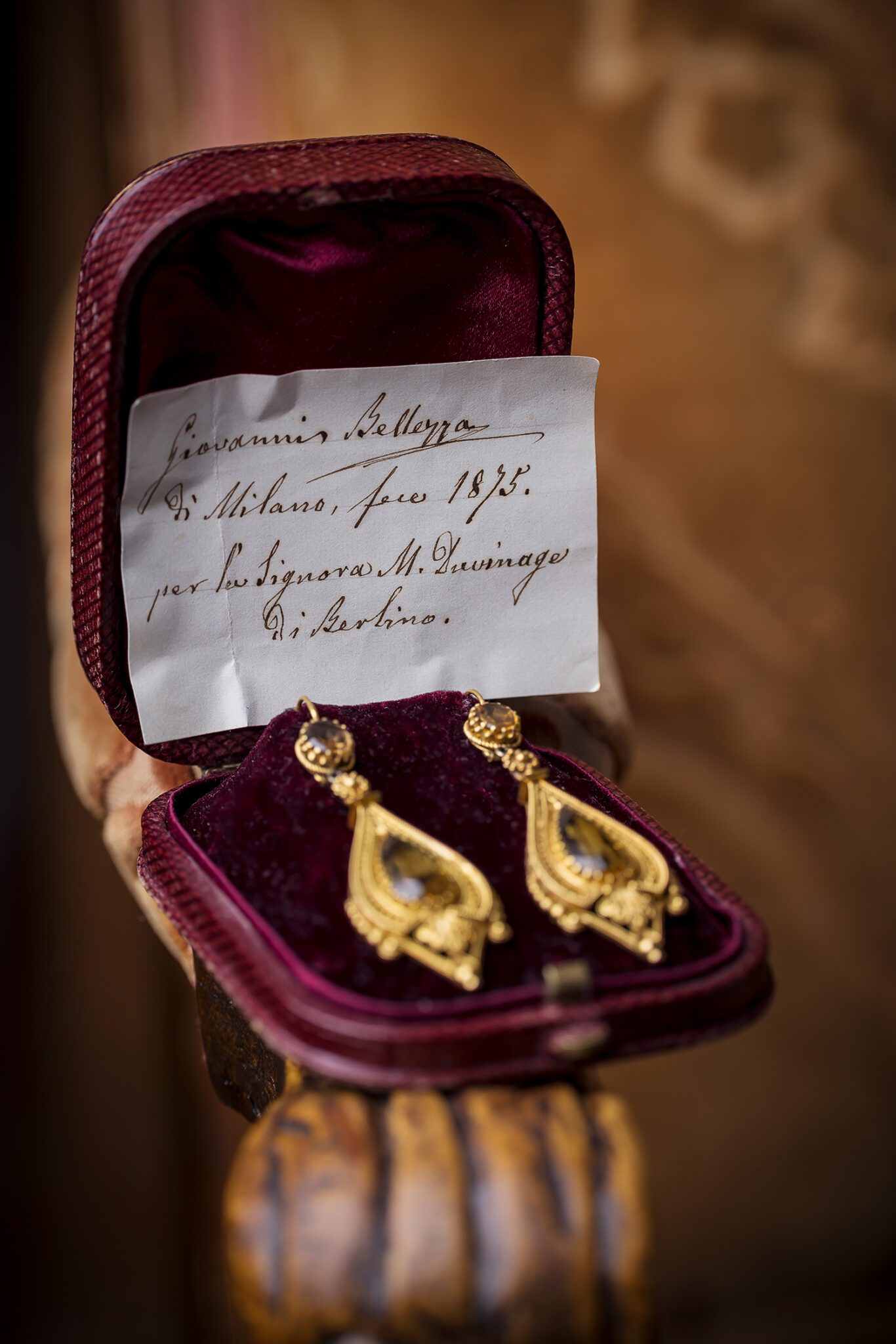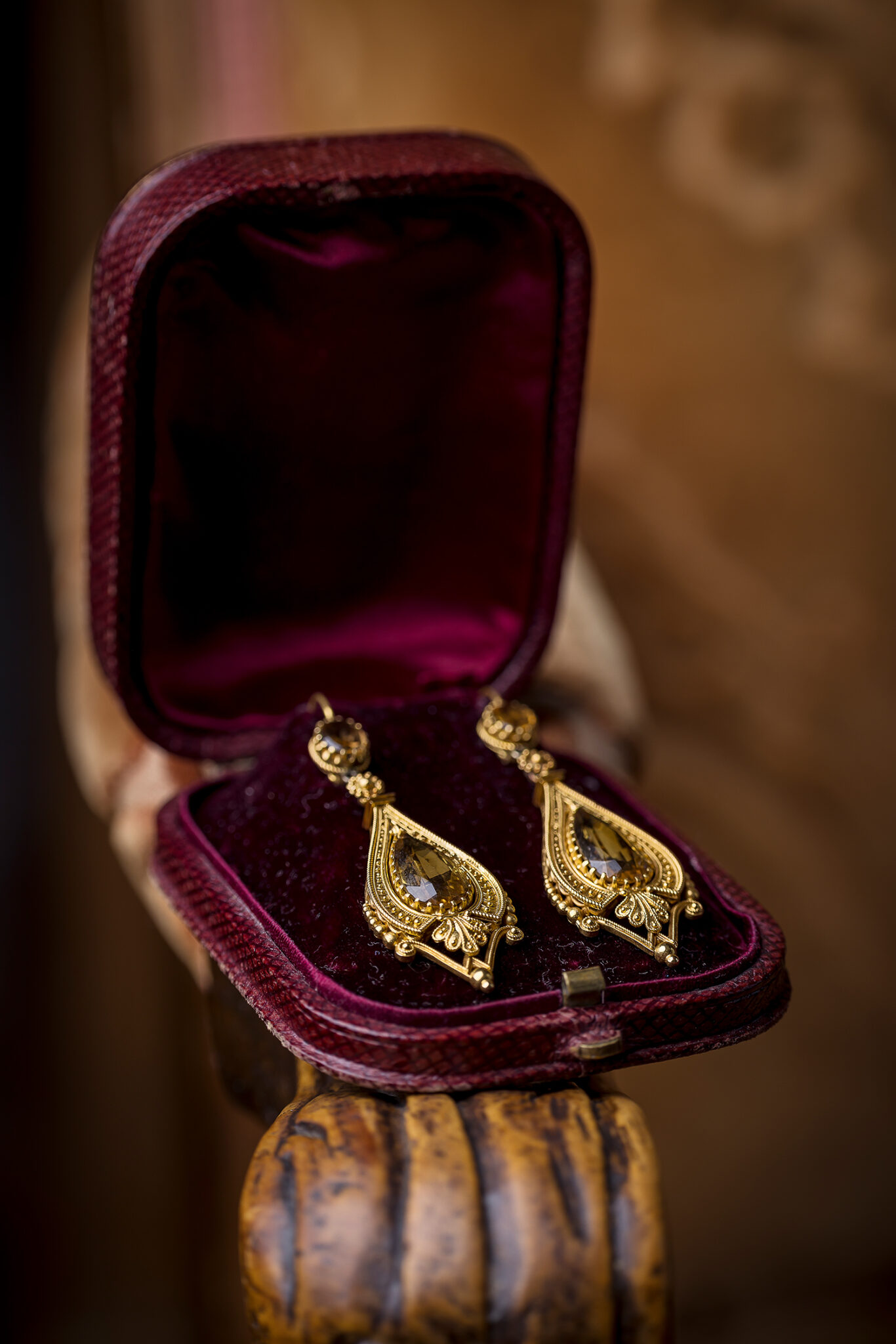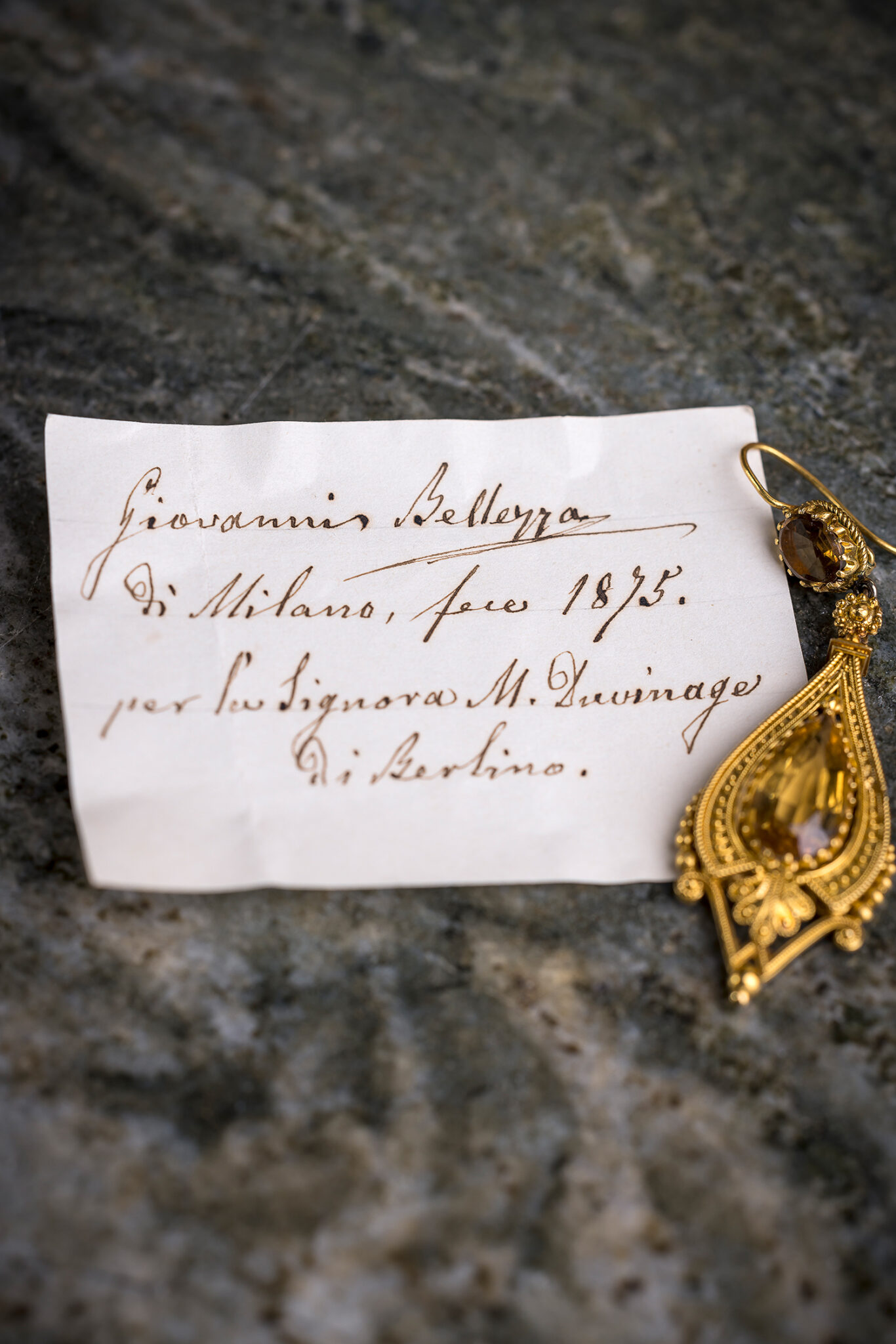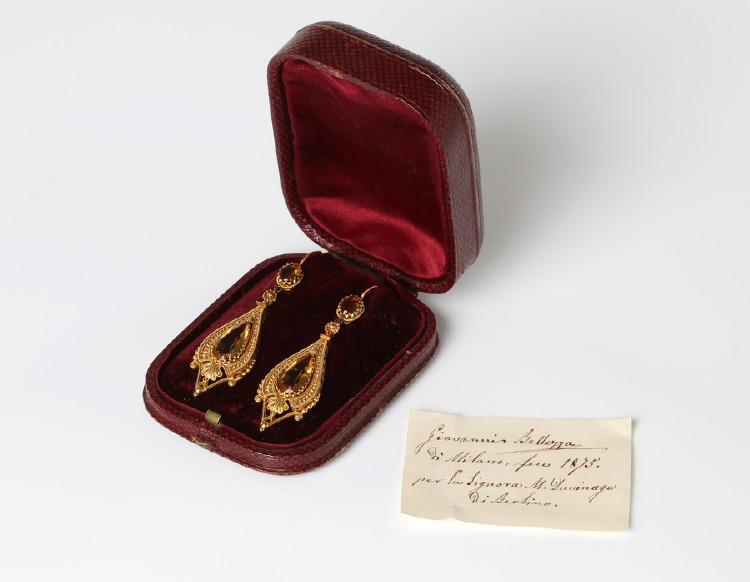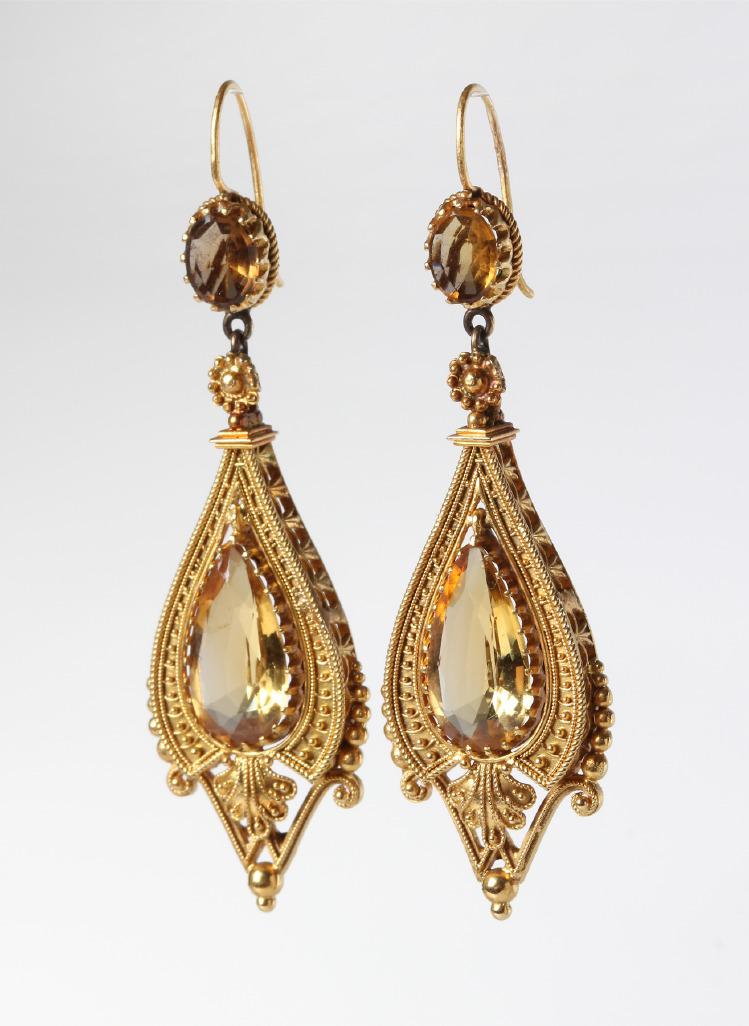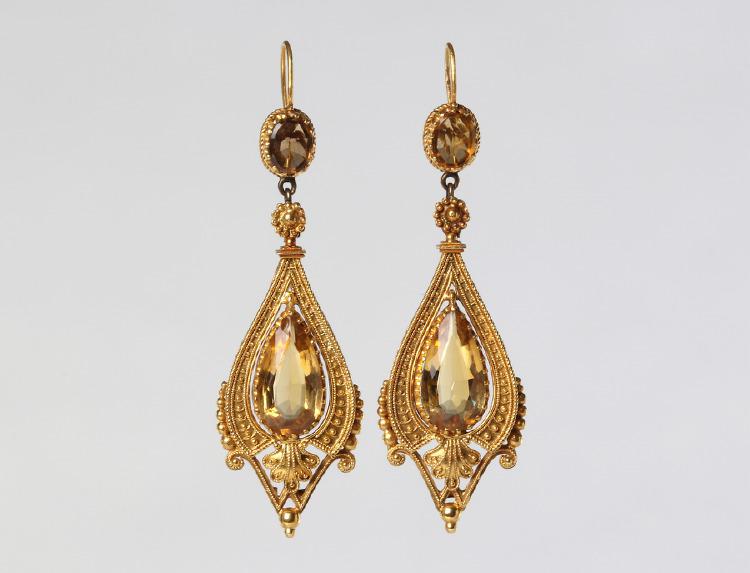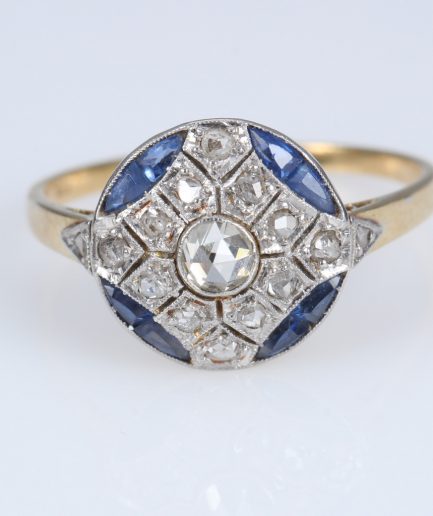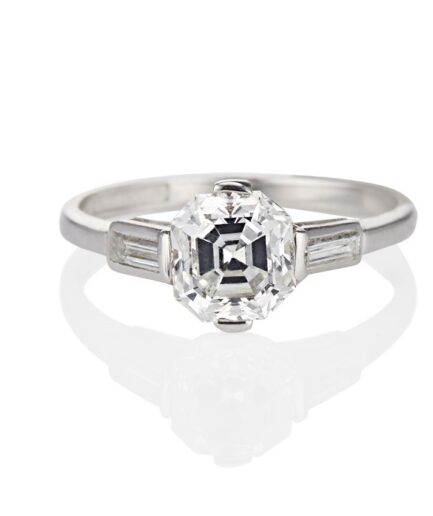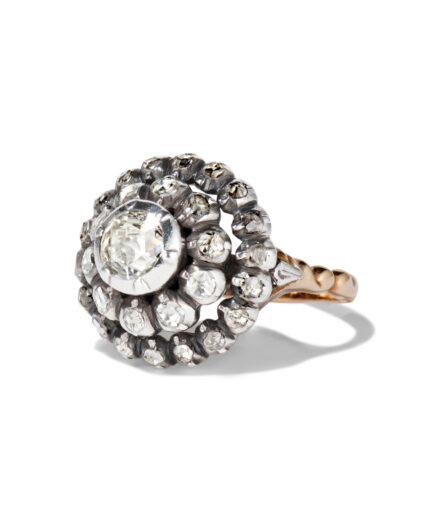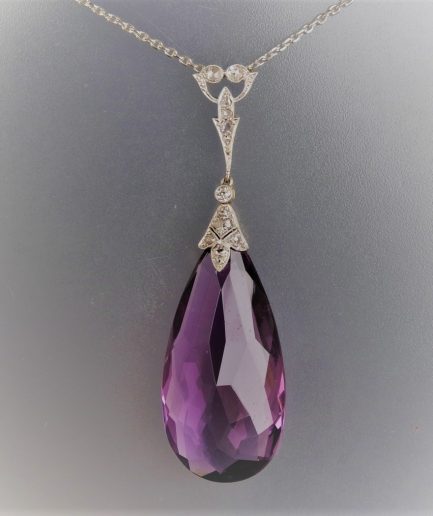A pair of high quality 18k gold earrings with faceted citrines. Outstanding filigree work, second half of the 19th century.
Revival jewelry embodies a long-standing tradition of drawing inspiration from the past – either by copying or reinterpreting ancient motifs. It has been a way for us to wear jewelry pieces that connect us to the rich history of the beginning of civilization. Nineteenth-Century jewelry consisted predominantly of adaptations of earlier jewelry styles. We now know, through historical studies, that this return to the past sprung from a renewed sense of national pride. The revivial movements reflected time periods of national achievement and symbolized all that was great in the history of European civilization. Each country embraced this nostalgia for different reasons.
In the nineteenth-century revivial movement sculptors played a major role in the design of jewelry. They contributed models for use in three-dimensional sculptural figural designs. After opening the Regolini-Galassi tomb in 1836, jewelers Fortunato Pio and Alessandro Castellani were granted access by papal authorities to study the ancient gold jewelry. They were also given access to huge collections of antiquities between 1840 and 1850, making it possible for the Castellani family to study the art of Etruscan granulation, filigree and other gold work. They began to uncover the mystery of how the ancients created their designs by soldering detail to the metal rather than carving, punching, or cutting.
Two major styles emerged: Gothic (or Medieval) Revival and Renaissance Revival but many more existed like the Eqyptian or the Etruscan.
In this pair of earrings we find clear inspirations from both Etruscan and Medieval times.
Provenance: The earrings came with a note: “Giovanni Bellezza Di Milano, 1875. per La Signora M. Duvinage Di Berlino”. And another note saying Duvinage gifted the earrings to Märta Teljstedt and hence by decent. Béatrice Amélie du Vinage, born August 14, 1911 in Berlin, died in 1993, was a German-Swedish painter, graphic artist, photographer and journalist. Her art is mainly landscapes in various mediums. She is represented in numerous museums in both Germany and Sweden. She settled in Sweden and became a Swedish citizen in 1961 and together with Märta Teljstedt acquired a studio on Regeringsgatan in Stockholm and later they moved together to the Swedish island of Öland.
Giovanni Bellezza (1807-1876) was an Italian sculptor. He was primarily a sculptor of bronzes and an engraver.
He was commissioned in 1842 by the City of Milan to create the items commemorating citizenship offered to Vittorio Emanuele II at the wedding celebrated with Maria Adelaide of Habsburg-Lorraine. In 1854 he engraved the paliotto in Milan Cathedral, in the chapel of the Madonna of the Tree. In 1856 he was commissioned by Emperor Franz Joseph of Austria to recreate two reliquaries in gold, based on sixteenth century works originally by Nicola da Milano to a design by Benvenuto Cellini which had been stolen in 1848 and melted down by Austrian troops. These relics are now preserved in the Basilica of Sant’Andrea, Mantua. For the 1800 anniversary of the martyrdom of St. Peter, he created a chalice with detail on the foot with the Sacrifice of Abraham.
The earrings weigh a total weight of approx. 10.3 grams. Length approx. 55 mm. 19th century fitted case included. One citrine with a minimal chip, reinforced at the middle section.




